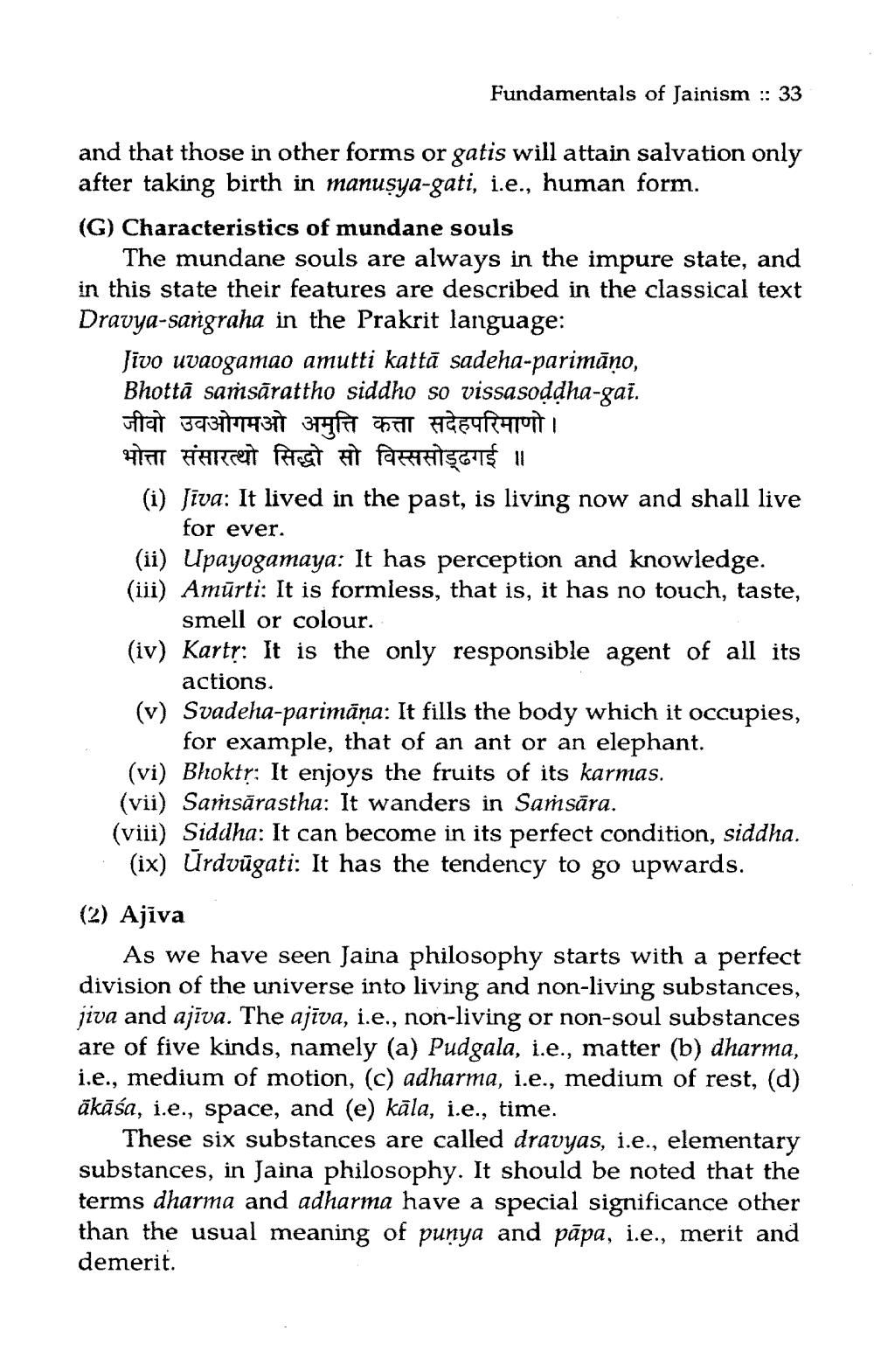________________
Fundamentals of Jainism :: 33
and that those in other forms or gatis will attain salvation only after taking birth in manusya-gati, i.e., human form. (G) Characteristics of mundane souls
The mundane souls are always in the impure state, and in this state their features are described in the classical text Dravya-sangraha in the Prakrit language:
Jivo uvaogamao amutti kattā sadeha-parimāņo, Bhottā saṁsārattho siddho so vissasoddha-gai. जीवो उवओगमओ अमुत्ति कत्ता सदेहपरिमाणो। भोत्ता संसारत्थो सिद्धो सो विस्ससोड्ढगई ॥ (i) Jiva: It lived in the past, is living now and shall live
for ever. (ii) Upayogamaya: It has perception and knowledge. (iii) Amūrti: It is formless, that is, it has no touch, taste,
smell or colour. (iv) Kartr: It is the only responsible agent of all its
actions. (v) Svadeha-parimāna: It fills the body which it occupies,
for example, that of an ant or an elephant. (vi) Bhoktr: It enjoys the fruits of its karmas. (vii) Samsārastha: It wanders in Saṁsāra. (viii) Siddha: It can become in its perfect condition, siddha.
(ix) Urdvūgati: It has the tendency to go upwards. (2) Ajiva
As we have seen Jaina philosophy starts with a perfect division of the universe into living and non-living substances, jiva and ajīva. The ajīva, i.e., non-living or non-soul substances are of five kinds, namely (a) Pudgala, i.e., matter (b) dharma, i.e., medium of motion, (c) adharma, i.e., medium of rest, (d) ākāśa, i.e., space, and (e) kāla, i.e., time.
These six substances are called dravyas, i.e., elementary substances, in Jaina philosophy. It should be noted that the terms dharma and adharma have a special significance other than the usual meaning of punya and pāpa, i.e., merit and demerit.




